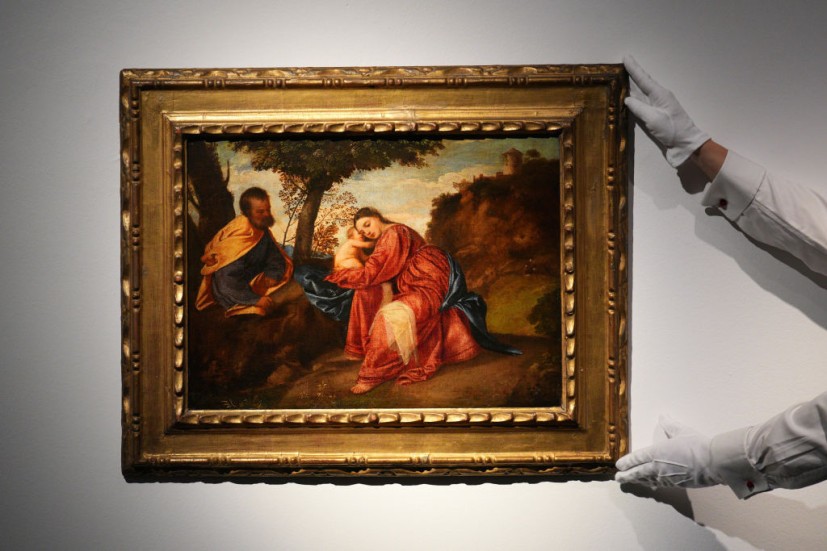Looted, stolen, found in a bus stop, Titian's early masterpiece, Rest on the Flight to Egypt, has just been auctioned for £17.5 million ($22.3 million).
The painting depicts Mary-who dominates the canvas-Jesus and Joseph sitting down to rest on their sudden flight to Egypt to escape Herod's sword. The work dates from around 1508, when Titian-real name, Tiziano Vecelli-was in his early 20s. As such, the canvas only measures about 2 feet wide-minuscule, compared to the master's later works.

: In the first decades of the 17th century, it was documented as being one of at least 15 Titians in the collection of the Venetian spice merchant, Bartolomeo della Nave. After his death, the painting was purchased by James Hamilton, 3rd Marquess and 1st Duke of Hamilton in 1638, and shipped to England. The Royalist Hamilton was executed in 1649, and his artworks were acquired by Archduke Leopold Wilhelm of Austria, who, at the time, was assembling a massive art collection. The collection travelled with Leopold to Vienna, where it was housed in Belvedere Palace. In 1809, Napoleon invaded Austria, and the painting was one of many that he looted. After Waterloo, the painting went to Scottish landowner Hugh Andrew Johnstone Munro, then after Munro's death, it went to Christie's for the first time, and was acquired by John Alexander Thynne, 4th Marquess of Bath, in 1878.
Shipped back to England, the painting was housed in the Thynnes' seat, Longleat house, where it saw its longest undisturbed period. This was put to an end in 1995, when it was stolen from Longleat's drawing room. After a seven-year hunt, it was discovered in a bus stop, stuffed in a shopping bag, by Charles Hill. Despite the meanness of its surroundings, and the fact that it was missing its frame, the painting was largely undamaged and returned to Longleat. It was there that it stayed until its recent sale at Christie's.